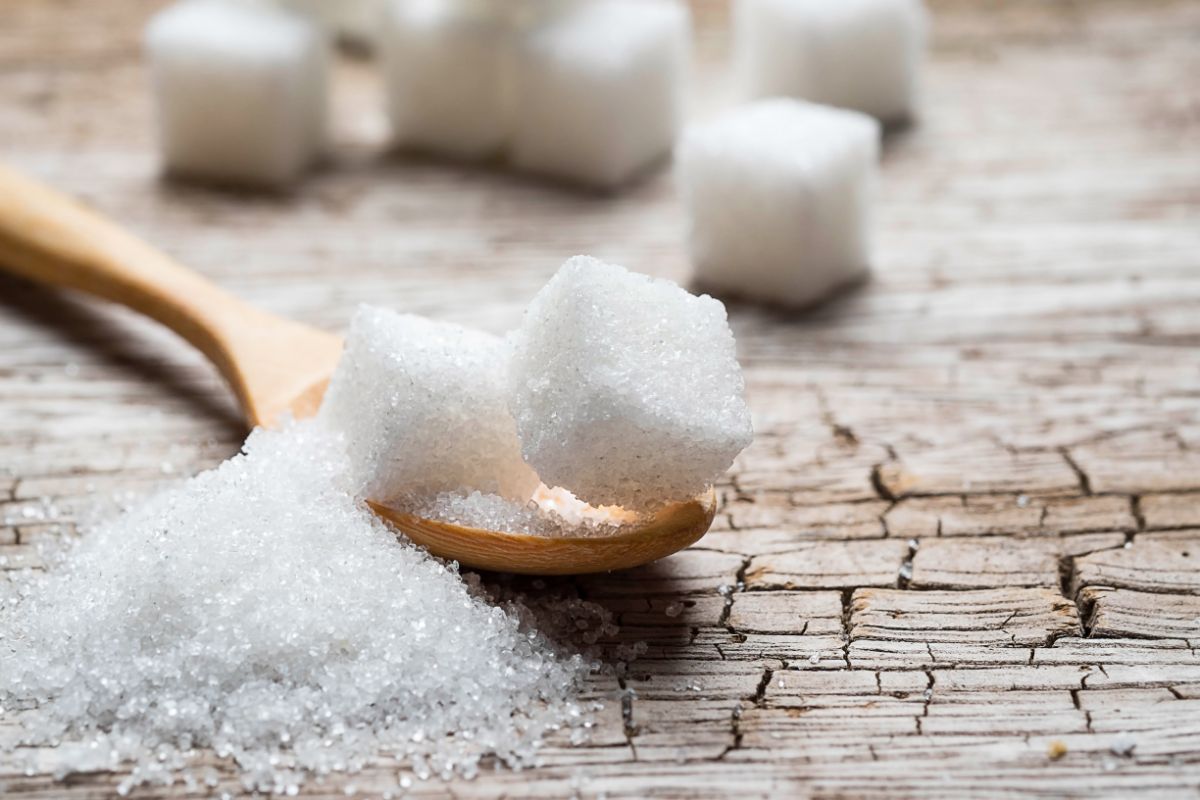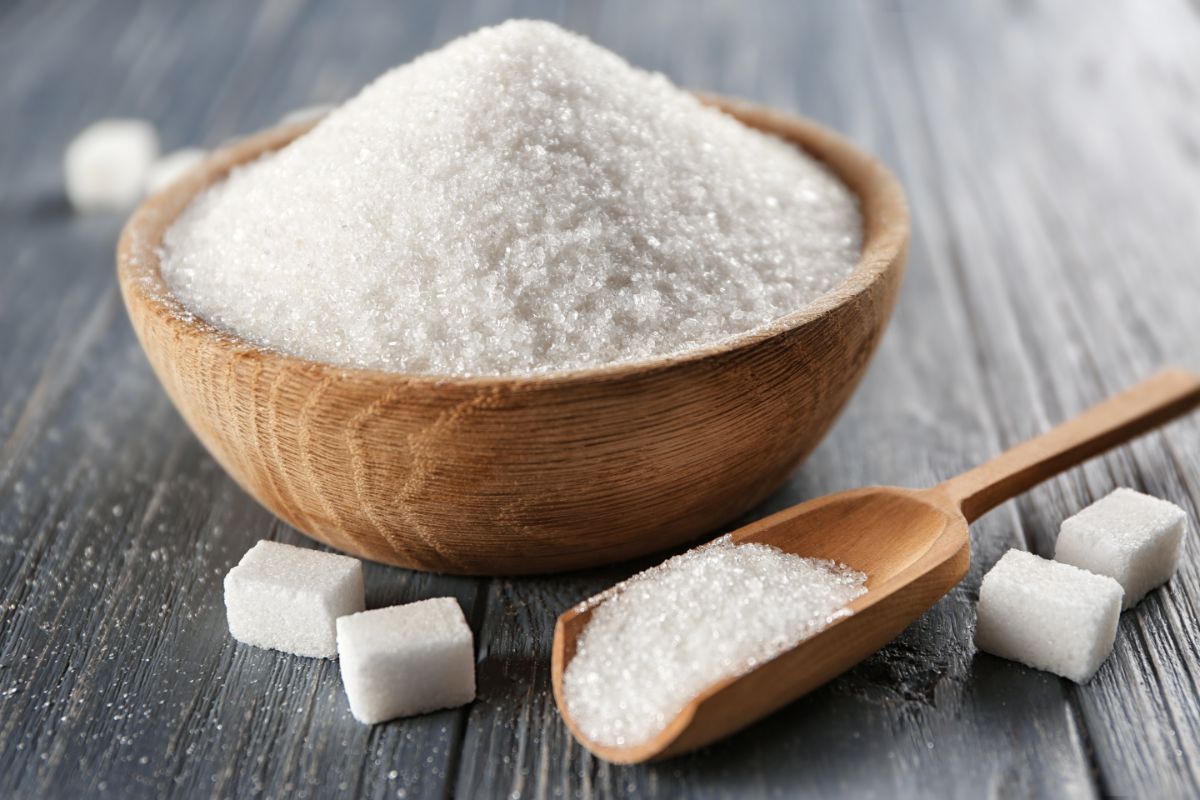The dough isn’t rising correctly? When this happens, a whole slew of questions goes through your head. If you haven’t been baking for years, then it can seem confusing, and speculating doesn’t help. You need answers. Yeast isn’t all that tricky once you know how it works. It’s alive and has needs like sugars to eat.

Can too much sugar kill yeast? Too much sugar can inhibit or even kill the yeast by making the yeast produce too much alcohol. Yeast can tolerate just a certain amount of alcohol. So, the sugar will not kill yeast directly.
Sugar and yeast both need water content in your dough. If you add too much sugar that competition can go wrong for the yeast, when it does the dough will rise too slowly or not at all because the sugar is absorbing all the available water.
*This article may contain affiliate links. As an Amazon Associate, I earn from qualifying purchases. Please take that into account.
- Dutch oven
- Large mixing bowl
- Measuring cups and spoons
- Bread thermometer (fancy or a budget one)
- Scoring lame
Extra (nice to have):
- Kitchen scale
- Dough scraper and bowl scraper (yes, they are different)
- Cooling rack
- Baking stone (you don’t need a dutch oven if you use this)
👉Learn how to make bread and pizza with this awesome book.
Solving the Yeast & Sugar Problem
At first, it may seem like you simply need more water, but unfortunately, the dough is a little more complicated than that. The most straightforward solutions are using a recipe with less sugar or adding more yeast.
Oddly enough, the amount of yeast in most one loaf recipes is more than you need to make good bread. Moreover, you can make bread with no added sugar at all.
You can use as little as an eighth of a teaspoon of yeast to make a loaf of bread. So why do we tell people they need more? The answer is rooted in a marketing strategy from the 1950s.
Making things faster and simpler for homemakers was a high priority at that time. One way to accomplish that goal was to add more yeast and rise the bread many still made at home faster. That carried over because it makes no sense to tell customers they need less of your product and more patience if you lose money.
Sugar, on the other hand, is a matter of taste. Most bread, at least in America is soft like a cake and very sweet compared to how it’s made in other parts of the world. In sweeter doughs, like Hawaiian Sweet Bread, you need more yeast to handle the quantity of sugar involved.
The sweet tooth is something we’ve cultivated as a culture. The sugar barons rely a great deal on having their American consumers to keep themselves in business, so little white lies like the idea that yeast needs white sugar to both prove it and make it rise continue to this day.
If There’s No Sugar, What Will The Yeast Eat

This is a common misunderstanding. It may seem like it makes no sense first to say yeast needs to eat sugar and then tell you it doesn’t need sugar at all. The truth is that the dough, your flour, already contains natural sugars.
There’s more than enough sugar in conventional flour for a loaf of bread to rise. You can also add other forms of sugar than the white stuff you get in bags at the grocery store.
Honey, Agave, Stevia, fruit juices, and various ‘fake sweeteners’ made from alcohols like xylitol all work just as well to give your yeast a quicker rise.
What Happens When Bread Rises
The exact science behind bread rising is fascinating. You can tailor your bread making to fit your needs better by varying two crucial factors, the quantity of yeast and the temperature.
A regular loaf of bread that takes around two and a quarter teaspoons of yeast to rise in a warm room in a couple of hours can still rise if you run low on yeast. Instead, add a half teaspoon and let it rise in a cool place or even a not-too-cold refrigerator overnight.
If your fridge freezes water, it will probably be too cold for your bread as well, and instead of rising very slowly, it will freeze it like premade bake-at-home buns.
As the yeast consumes the sugar inside the flour, which makes up about 2-3% of the mass of the ground grains, it releases bubbles. The process is so similar to humans breathing out that it’s called “respiration”.
The major difference is that it happens inside a mass of sticky dough. Those bubbles are what cause the dough to rise and also what give loaves of bread and similar baked goods their unique texture. If you look closely, you can see the flour paste and bubbles.
Beyond Sugar
Dough that won’t rise is vexing, but sugar isn’t necessarily the culprit. Several things will stop your bread dough from rising which have nothing to do with how much yeast or sugar you include.
- Dead yeast won’t rise at all. Check your expiration dates, and if necessary proof your yeast by placing some of it in a bowl of warm water and sprinkling a pinch or two of sugar over it. This should be enough to make it get frothy or foamy on top within a few moments and prove the yeast is reacting.
- You can kill the yeast with alcohol produced in the chemical reaction if you don’t punch your dough down enough. Failing to collapse the dough properly allows these alcohols to build up and eventually kill the yeast inside.
- Salt dehydrates yeast. If you add too much or too soon your salt can prevent your yeast from absorbing the water it needs.
- Water temperature can cause people a lot of headaches. If it’s too cold or too hot, your bread won’t rise the way it should at all. At 138°F, all yeast dies, but active dry and instant yeasts will kick the bucket at a mere 120°-130°F. Cake yeast is the most delicate and dies at just a hundred degrees. (Pro Tip: You need about twice as much cake yeast if you want to substitute it into a cake recipe). At or below 70°F, the water isn’t warm enough to help with the chemical reaction at all. Use a thermometer and try to keep the water between 110° and 115°F for most bread recipes unless it tells you otherwise.
Final Thoughts
Baking bread can be a lot of fun. There’s no need to stress so much over the sugar and yeast. If you add too much yeast instead of too much sugar, you get faster rising bread.
Your dough will be stickier because more gluten is being produced when you use yeast in this way. If you go too far overboard, then you end up with a gluten-packed mess, but it’s all part of the learning process.
Once you’ve made a few loaves of any given type of bread, you’ll have a sense of what it should feel like when you touch the dough at different stages. Start with a recipe and adapt your proportions slowly over time to find what works, and tastes best for you.
